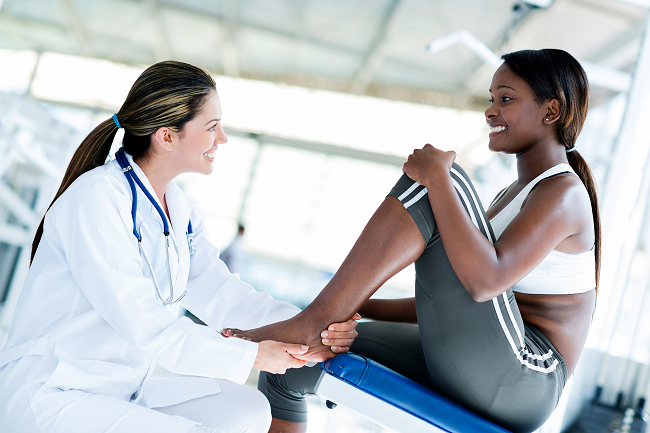Exercising and playing sports not only improves your child’s fitness, it boosts self-esteem, coordination, and self-discipline. But these benefits sometimes come with a price — injuries.
Fortunately, you can help your children prevent many sports injuries by taking some simple precautions. First, make sure your child is using the right helmet or other appropriate protective gear for the sport of choice. And be sure the gear fits properly. Quality protective equipment that fits the body properly can help prevent all kinds of problems, whatever the sport.
Contact sports, such as football, put athletes at obvious risk. Of special concern are severe injuries to the neck, spinal cord, and — for young athletes — growth plates (the areas of developing cartilage where bone growth occurs). The bones, muscles, tendons, and ligaments of young athletes, for example, are still growing and are more prone to injury. Their growth plates are weaker than the nearby ligaments and tendons.
Head injuries are the most serious of the sports-related injuries. Although fatal head injuries are rare, they are the leading cause of death from a sports-related injury. About 21% of traumatic brain injuries in kids are related to sports and recreational activities — including bicycling, skateboarding, and skating injuries.
Virtually any part of the body, however, can be injured during sports or exercise. Many injuries involve the musculoskeletal system: muscles, bones, and associated tissues like cartilage. Sprains and strains are among the most common injuries, while knees, ankles, and wrists are commonly injured joints.
Children learning a new sport are at a higher risk for injury — more prone to falls or collisions — because their bodies aren’t trained to move a certain way.
If your child participates in sports, look for programs with certified athletic trainers. If you’re supervising a sport, make sure children know and follow the rules of the game and learn proper form. Learning to stroke properly from a swimming coach, for example, can help prevent shoulder problems.
Ideally, children should be grouped according to skill level and size, not by age. If that’s not possible, design the activities to accommodate children with varying skill levels. When two children of the same age but different levels of physical maturity are pitted against each other, the physically immature child is more likely to get injured. It’s also important to provide a safe environment. A poorly maintained playing field or unsecured soccer goal can lead to serious injuries.
But most importantly, don’t let the prospect of an injury prevent your child from exercising or participating in sports. Sports provide valuable ways to be physically active, learn skills, socialize, and have fun.
Dr. Bill Moore Smith, primary care and sports medicine physician, is currently accepting new patients at UT Erlanger Institute for Sports and Health, UT Erlanger Primary Lookout Mountain, and treats students at UTC. To schedule an appointment with Dr. Smith, call 423-778-2564.







